Introduction
Zoning serves as the backbone of urban development, establishing guidelines for land use and promoting compatibility among different property uses. It is a crucial element of urban planning that allocates areas for residential, commercial, and industrial purposes, preventing incompatible developments. However, zoning regulations can have significant implications for property development, influencing housing costs, density, and affordability.
This article explores the various types of land zoning and restrictions, highlighting real-world examples and the need for comprehensive reforms. It also emphasizes the importance of compliance with zoning regulations and the role of deed restrictions in shaping property use. Additionally, the article delves into the complexities of easements, rights-of-way, and the benefits of engaging professional assistance in land use.
Lastly, it discusses the steps for landowners and developers to avoid pitfalls and the process of changing or removing deed restrictions. Overall, this article provides a comprehensive overview of land zoning, restrictions, and the importance of navigating the complex landscape of land use regulations.
Types of Land Zoning and Restrictions
Zoning serves as the framework for urban development, dictating land use and ensuring compatibility between different property uses. It's a central element of urban planning that strategically allocates areas for residential, commercial, and industrial purposes, preventing incompatible developments, such as a factory emerging amidst a residential neighborhood.
Minimum lot size requirements, a common feature of zoning codes, significantly influence property development. These regulations specify the minimum parcel size for individual homes, which can raise housing costs by requiring more land per dwelling and reducing the number of potential housing units in a given area. For instance, a standard minimum lot size in Dallas is 7,500 square feet. On the other hand, cities like Houston have promoted development by reducing these minimum requirements, illustrating the impact of zoning on housing density, affordability, and urban sprawl.
Real-world examples highlight the consequences of strict zoning laws. In Claremont, New Hampshire, zoning code violations led to the eviction of long-term tenants, showcasing the potential for housing shortages exacerbated by rigid zoning regulations. In contrast, St. Paul, Minnesota, increased its neighborhood density by permitting up to four housing units per lot, mirroring Minneapolis's earlier reforms to include triplexes citywide.
Zoning and land use reforms are thus recognized as critical for enabling development and improving housing affordability. However, modest reforms have typically resulted in only slight increases in housing supply—an average of 0.8%—demonstrating the need for more comprehensive adjustments to existing regulations.
As urban areas evolve, so must zoning policies. By examining market signals, such as frequent variance requests or rezoning applications, cities can identify which rules are out of step with current needs. For instance, Lexington, Kentucky, eliminated parking requirements, challenging other cities to reassess outdated policies. The Urban Institute's research and databases like the North Texas Zoning Atlas provide valuable tools for understanding the implications of zoning and guiding reform efforts.
In summary, understanding zoning is vital for those involved in land acquisition and development, as it shapes the potential and limitations of property use. By staying informed about zoning practices and advocating for sensible reforms, stakeholders can contribute to the creation of more dynamic, equitable, and sustainable urban environments.
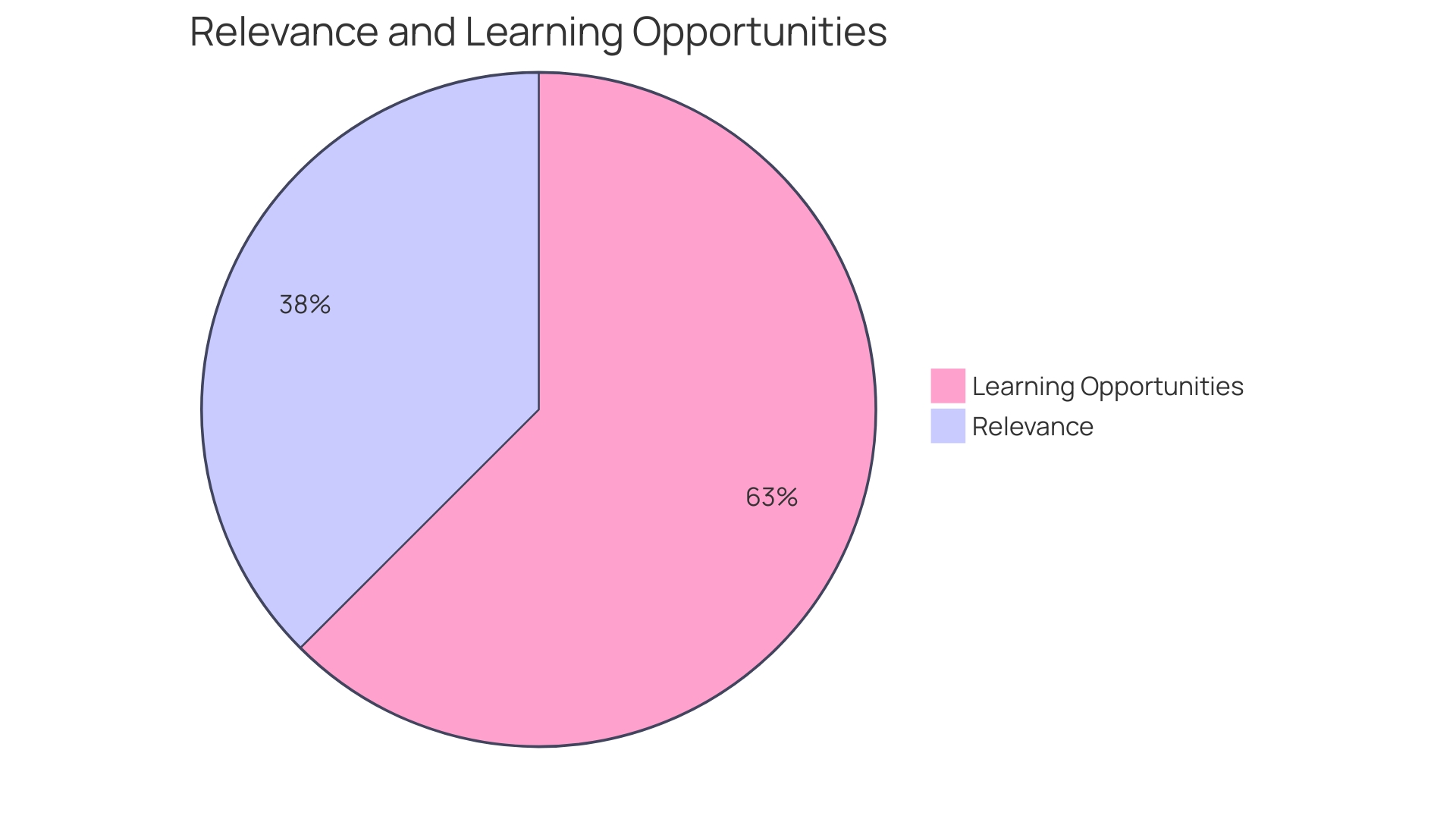
Understanding Zoning Status and Regulations
Zoning classifications serve as a pivotal framework within urban planning, dictating permissible property uses and imposing specific development constraints such as density, setbacks, and lot sizes. These regulations are not merely theoretical concepts but have real-world implications, as evidenced by the comprehensive zoning data collected from 473 municipalities and 46 unincorporated jurisdictions in California. Such data underpins the national conversation around zoning's role in shaping the availability and affordability of housing.
The empirical relationship between zoning regulations and housing market dynamics is illuminated by a study from the Urban Institute, which indicates that relaxing land use restrictions can have a modest yet statistically significant effect on housing supply, increasing it by an average of 0.8% in the medium term. This suggests that while zoning reforms are crucial, they must be complemented by policies that support the construction and financing of new housing to fully capitalize on increased development capacity.
Zoning's profound influence on community structure and individual property rights was recently underscored in Claremont, New Hampshire, where a zoning board's strict enforcement led to the eviction of long-standing tenants due to non-compliance with local codes. Meanwhile, St. Paul, Minnesota, offers a contrasting narrative where recent zoning reforms aim to increase neighborhood-scale density, reminiscent of Minneapolis's earlier efforts to expand housing types beyond single-family homes.
Historically, zoning emerged as a more comprehensive alternative to the piecemeal approach of nuisance laws and covenant agreements. It reflects a shift from individual property agreements towards a collective vision for urban development. Yet, zoning's evolution from a set of guidelines to a complex, omnipresent system raises questions about the balance between public regulation and private property rights. As zoning continues to dictate where we live, work, and engage in leisure, it remains a testament to the government's planning prowess while also challenging the foundational American principle that property ownership inherently includes the right to its use.
In light of zoning's multifaceted impact, it is essential for those involved in land acquisition and development to grasp the intricacies of zoning codes. Not only does this knowledge inform strategic decision-making, but it also enables one to anticipate and navigate potential legal challenges and stakeholder interests that accompany land use changes.
Importance of Compliance with Zoning Regulations
Understanding and adhering to zoning regulations is imperative for anyone involved in property development or ownership. Not only do these guidelines ensure that land use aligns with municipal planning, but non-compliance can lead to substantial legal repercussions, financial penalties, and unexpected delays in project timelines.
Zoning laws have evolved significantly since their inception in early 20th century Los Angeles, reflecting shifting societal needs and environmental concerns. For instance, the rapid escalation of wildfire risks in California over the past two decades has necessitated a reevaluation of land use to mitigate disaster risks. This mirrors the historical upzoning initiatives in Zurich, Switzerland, where incremental changes were made to allow for increased housing density without compromising the integrity of protected historical areas.
Recent news underscores the ever-changing landscape of land development and the policies that shape it. In Tashkent, Uzbekistan, for example, President Shavkat Mirziyoyev's initiatives to finance mortgages and provide opportunities for builders highlight the interplay between government policy and housing development. Similarly, the construction of affordable housing in San Francisco illustrates the ongoing efforts to address residential needs within the constraints of existing zoning laws.
The financial implications of regulatory compliance are also significant. According to a 2021 NAHB report, the regulatory costs for a new single-family home have surged by 44% over a decade, underscoring the economic impact of zoning and other land-use regulations. In Ontario, the elimination of minimum car parking requirements for transit-centric developments indicates a shift towards more sustainable and space-efficient urban planning practices.
In light of these complexities, it is essential for landowners and developers to navigate zoning regulations with a comprehensive understanding of both the historical context and current trends. The strategic approach to zoning not only secures compliance but also aligns with broader objectives for sustainable and responsible land use.
Deed Restrictions: What You Need to Know
While zoning laws set the stage for land use within a community, it's essential to recognize the influence of deed restrictions. These private agreements place binding conditions on land use and development. They differ from zoning regulations, which are public legal instruments, in that they are private contracts between landowners. Deed restrictions can dictate a range of stipulations, from architectural styles to the prohibition of certain activities, or even limit the type of structures that can be built. An example of the impact of land use regulations is seen in Houston, which avoids traditional zoning codes and instead employs ordinances to manage development. By adjusting minimum lot-size requirements, Houston has been able to facilitate development and address issues such as housing affordability and urban sprawl. Conversely, stringent zoning practices, such as those mandating large minimum lot sizes, have contributed to increased home prices and hampered the construction of affordable housing, while also fostering urban sprawl and perpetuating social inequalities. The role of deed restrictions is further highlighted by their ability to impose constraints beyond the scope of public zoning laws, often reflecting the preferences of property developers and homeowners' associations rather than broader community needs. As a result, understanding deed restrictions is crucial for navigating the complex landscape of property rights and land use.
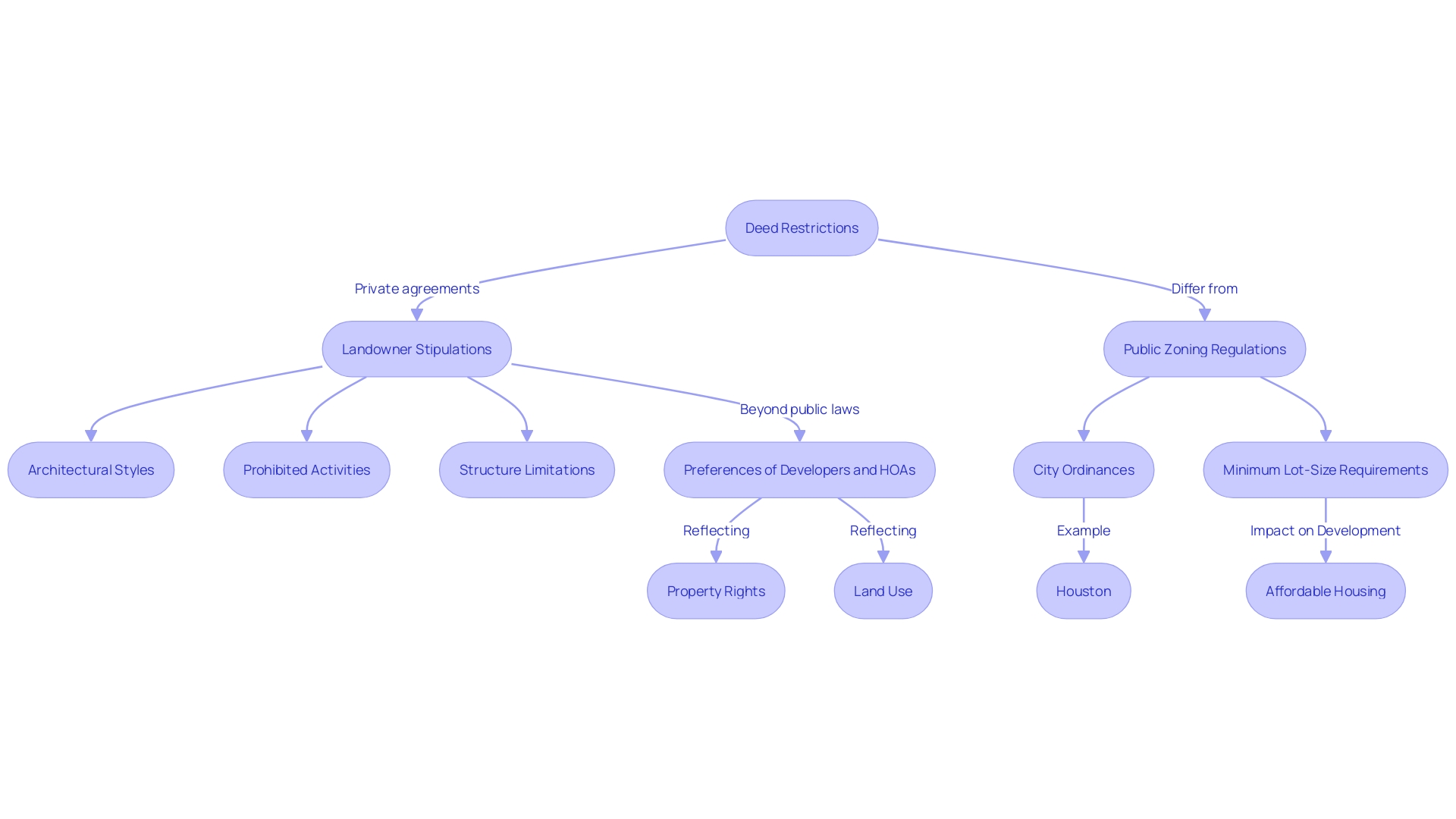
Finding and Reviewing Deed Restrictions
Understanding the limitations and guidelines that govern the use of your property is essential for ensuring compliance with local regulations and for making informed decisions about property usage. Deed restrictions, also known as restrictive covenants, are provisions included in a property's deed that dictate certain uses or non-uses of the land. These restrictions serve as a way to protect property values and maintain the character of a community. For instance, a Model Declaration, developed in collaboration with Fannie Mae and Freddie Mac, standardizes legal agreements between shared equity homeownership programs and homeowners, ensuring adherence to best practices and enabling access to conventional financing.
Case studies, like the ordeal of Orlando Capote in Coral Gables, highlight the real-world implications of deed restrictions. Despite the massive development around his family home, Capote's property is governed by deed restrictions that help safeguard his residence amidst the changing landscape.
When reviewing a deed, it is crucial to identify the involved parties: the grantor, who is transferring the property, and the grantee, who is receiving it. Deeds contain key information, such as the physical description of the property and any legally binding covenants. These covenants may include restrictions on the type of structures that can be built or modifications that can be made to the property. For example, the deed may prohibit commercial development in a residential area or dictate the style and size of houses that can be constructed.
Recent news from Charlottesville Community Engagement underscores the evolving nature of zoning ordinances and their impact on property value assessments. With the potential for more intense land use, property owners are concerned about the effect on their taxes and property rights. As zoning laws change to accommodate more residential density, it is increasingly important to understand how deed restrictions can influence property ownership and usage rights.
Amidst the shifting real estate landscape, with 83% of non-homeowners desiring but financially unable to purchase a house, understanding one's property rights and restrictions has never been more crucial. Whether you are a current homeowner or aspiring to be one, familiarizing yourself with deed restrictions can play a significant role in property management and investment strategies.
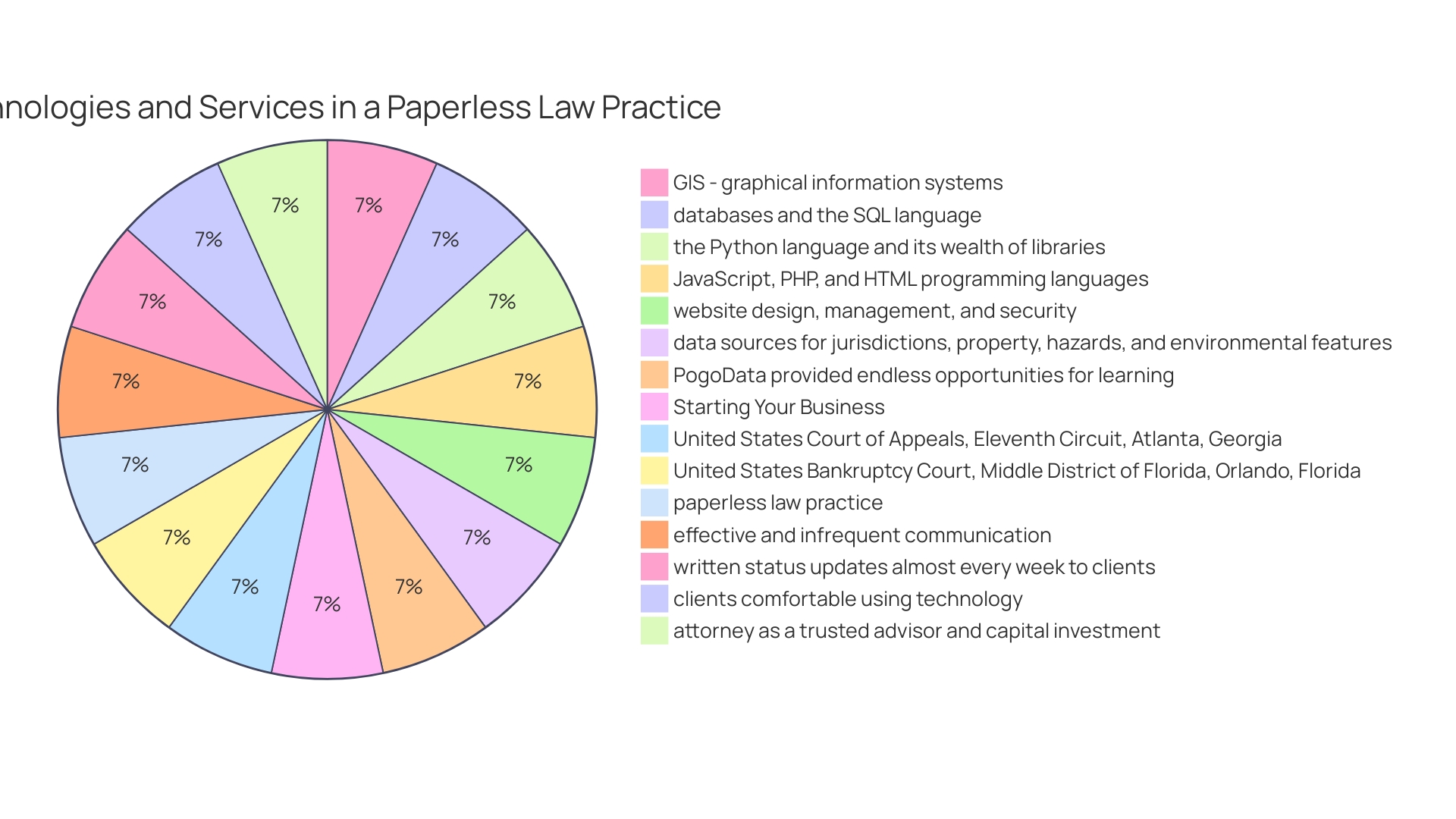
Common Types of Deed Restrictions
Deed restrictions, which can significantly influence property ownership rights and usage, are a vital consideration in land acquisition. For instance, they may dictate the architectural style of buildings, land usage, and even maintenance standards—ensuring properties adhere to prescribed guidelines. These restrictions are legally binding and are often established to preserve the character of a community, protect the environment, or maintain property values.
In some cases, deed restrictions offer anonymity to property owners, such as in Illinois where land trusts are used to conceal the identities of owners through private agreements. This setup involves the seller transferring ownership to a trust rather than directly to the buyer, with a trustee appearing as the owner on public records.
Moreover, deed restrictions can be leveraged to promote social objectives, such as the recent initiatives in Charlottesville, where the zoning ordinance rewrite aims to increase residential density. This includes granting property owners development rights bonuses for ensuring some units are priced below market for extended periods.
However, restrictions also come with challenges. For instance, post-occupancy agreements can create scenarios where sellers remain in the home post-sale, complicating the transition for buyers. These nuances underscore the importance of understanding the specific deed restrictions tied to each property to prevent unexpected complications in land acquisition and development.
Understanding the distinction between title and deed is also crucial. While a deed is a document that transfers property ownership and outlines any restrictions, the title represents legal ownership and the right to use the property. Therefore, comprehensively reviewing a deed is essential to ascertain any restrictions or requirements that may impact future property use or value.
As the real estate market evolves, so do the factors influencing it. For instance, changes in the UK housing market have led to sellers reducing asking prices, indicating broader economic shifts that can affect property values and ownership rights. Keeping abreast of these trends is vital for stakeholders in land acquisition to make informed decisions about property investments.
Navigating Easements and Rights-of-Way
Navigating the complexities of easements and rights-of-way is critical for any real estate development project. These legal instruments can have profound effects on how a property can be utilized and developed. An easement, for instance, may allow a third party to use a portion of the property for a specific purpose, such as access to a public road or utility line maintenance. The implications of easements were notably illustrated in the case of Reeves LLC v. Godspeed Properties LLC, where the Alaska Supreme Court clarified that an easement holder is limited to the express purposes of the easement and cannot make alterations that unreasonably interfere with the property owner's rights.
Rights-of-way, similar to easements, provide passage across a landowner's property, potentially impacting future development plans. The legal precedents set by such cases highlight the importance of understanding the specific terms and conditions outlined in easements and rights-of-way agreements.
Furthermore, development agreements have emerged as strategic tools, especially in volatile markets. These contracts between developers and local governments stipulate the project's rules and conditions, potentially securing the development from adverse zoning changes or other regulatory shifts. A well-negotiated development agreement is essential for ensuring the project's continuity and aligning with public benefits, as suggested by professionals in the field.
Conservation easements also play a significant role in land development. They are voluntary legal agreements that preserve the conservation value of a property by limiting certain types of development and land use, in exchange for possible tax benefits and financial incentives for the landowner.
In light of regulatory developments and municipal feedback opportunities, such as those published by the Department of Natural Resources and Environmental Control, it is apparent that staying informed about regulatory actions and participating in the feedback process can influence the outcome of development projects, particularly when revisions to official plans are considered.
Therefore, understanding the nuances and potential impacts of easements, rights-of-way, and development agreements is indispensable. It ensures that property owners and developers can navigate the legal landscape effectively, aligning their development objectives with regulatory frameworks and conservation efforts.

Engaging Professional Assistance for Land Use
Understanding and complying with land use regulations is crucial for property development. The intricate web of zoning laws, environmental policies, and property ownership rights demands expertise to navigate successfully. Real estate attorneys and land use consultants are specialized professionals who can provide essential support in this area. They bring to the table a wealth of knowledge and experience that can help you identify and address potential legal hurdles, ensuring your project adheres to all necessary regulations.
For instance, consider the case of a client seeking to purchase Akiya property in Japan. With a budget of ¥220,000, the client engaged professionals to search for suitable properties that met their criteria, demonstrating the value of expert assistance in land acquisition. Similarly, California's increasing wildfire risks and complex safety standards highlight the need for expert knowledge to navigate the associated legal and regulatory challenges.
Recent legislative developments, like California's AB 3093, aim to increase affordable housing by requiring detailed planning for new developments, which further underscores the importance of having professional guidance. Moreover, the 'Builder's Remedy' provision in the Housing Accountability Act allows developers to proceed with projects despite local zoning inconsistencies, provided certain conditions are met. This can have significant implications for land acquisition strategies and necessitates a deep understanding of the legal landscape.
Stats show that urban sprawl is responsible for a third of global greenhouse gas emissions, emphasizing the need for efficient development planning. Professionals can help achieve compact, mixed-use communities that align with environmental goals while addressing housing shortages. In Virginia, the proffer system illustrates the complex interplay between development and local government benefits, highlighting the necessity for informed negotiation and planning.
Ultimately, engaging with knowledgeable professionals can save time, reduce costs, and facilitate a smoother path to successful land development. Their expertise can help you overcome the challenges posed by the evolving landscape of land use regulations and ensure that your projects are both legally compliant and strategically sound.
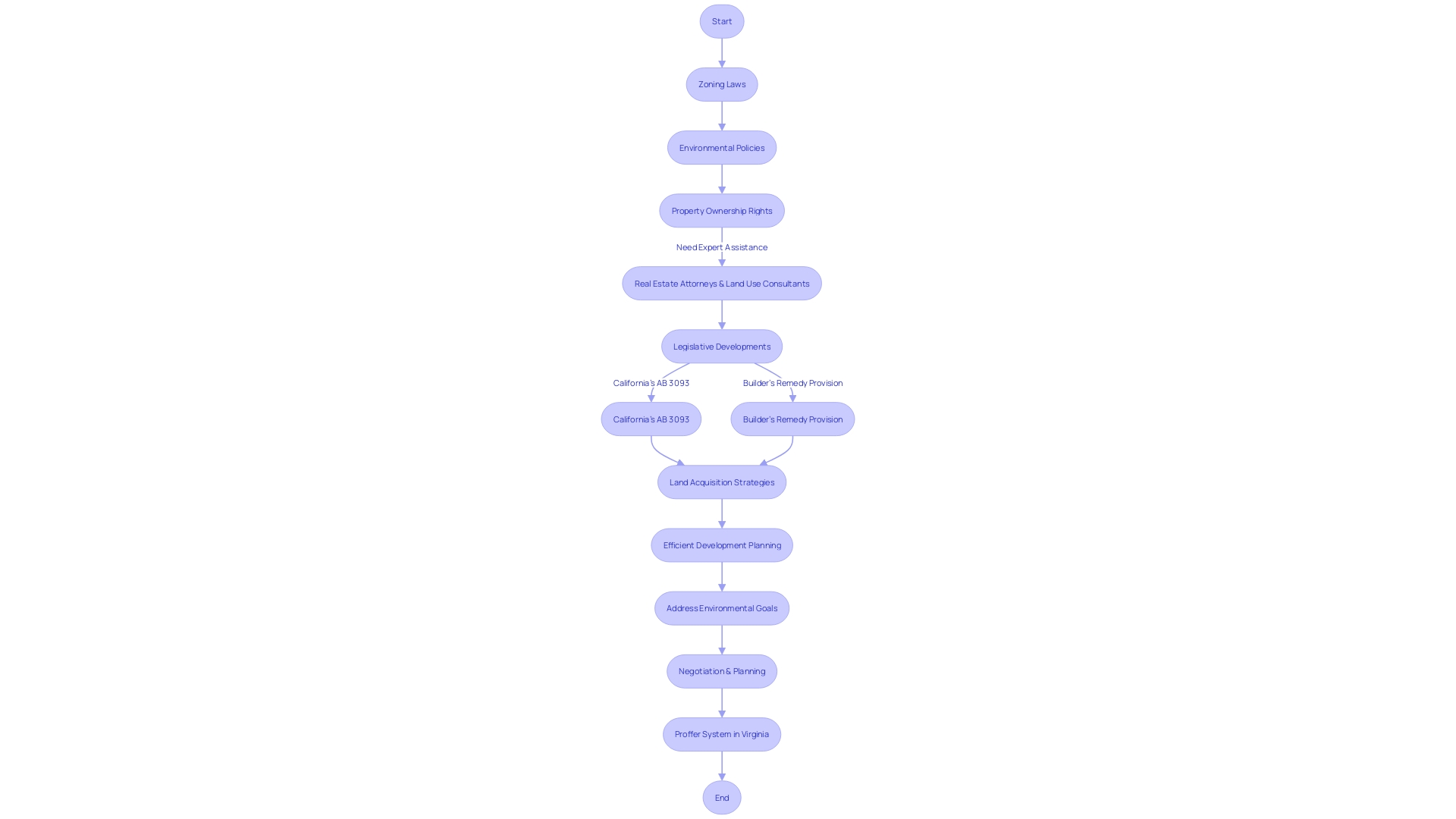
Steps for Landowners and Developers to Avoid Pitfalls
Navigating the complex terrain of land use and zoning regulations is crucial for landowners and developers to mitigate risks and ensure successful project execution. Due diligence, a comprehensive process encompassing the assessment of all relevant property aspects, stands as a fundamental step. This includes scrutinizing zoning laws, understanding environmental restrictions, and evaluating potential land use changes. Notably, the evolving nature of regulations, such as those involved in England's Green Belt adjustments, where a net increase of 870 hectares was recently added to the protected areas, exemplifies the dynamic landscape that professionals must navigate.
Obtaining the necessary permits is equally imperative. In the context of England's stringent planning policy, which emphasizes the importance of Green Belts to curb urban sprawl, securing permits can be particularly challenging. With approximately 37% of England's land area under protection, developers must precisely align their proposals with regulatory frameworks to avoid legal hurdles.
Legal counsel is often indispensable in this intricate domain, as suggested by the insights of Professor Brian J. Connolly, who emphasizes the intricate interplay between public and private regulation of land use. His expertise underscores the nuanced legal landscape where zoning can invisibly govern daily life, thus highlighting the necessity of informed legal advice.
Furthermore, local policies, such as those indicated by the draft National Policy Statement on Natural Hazard Decision-making in New Zealand, require careful consideration of natural hazards in planning decisions. This underscores the international relevance of risk assessment in land development.
In sum, a proactive approach that incorporates thorough research, regulatory compliance, and expert consultation can significantly diminish the risks associated with land restrictions, fostering a more resilient and successful development process.
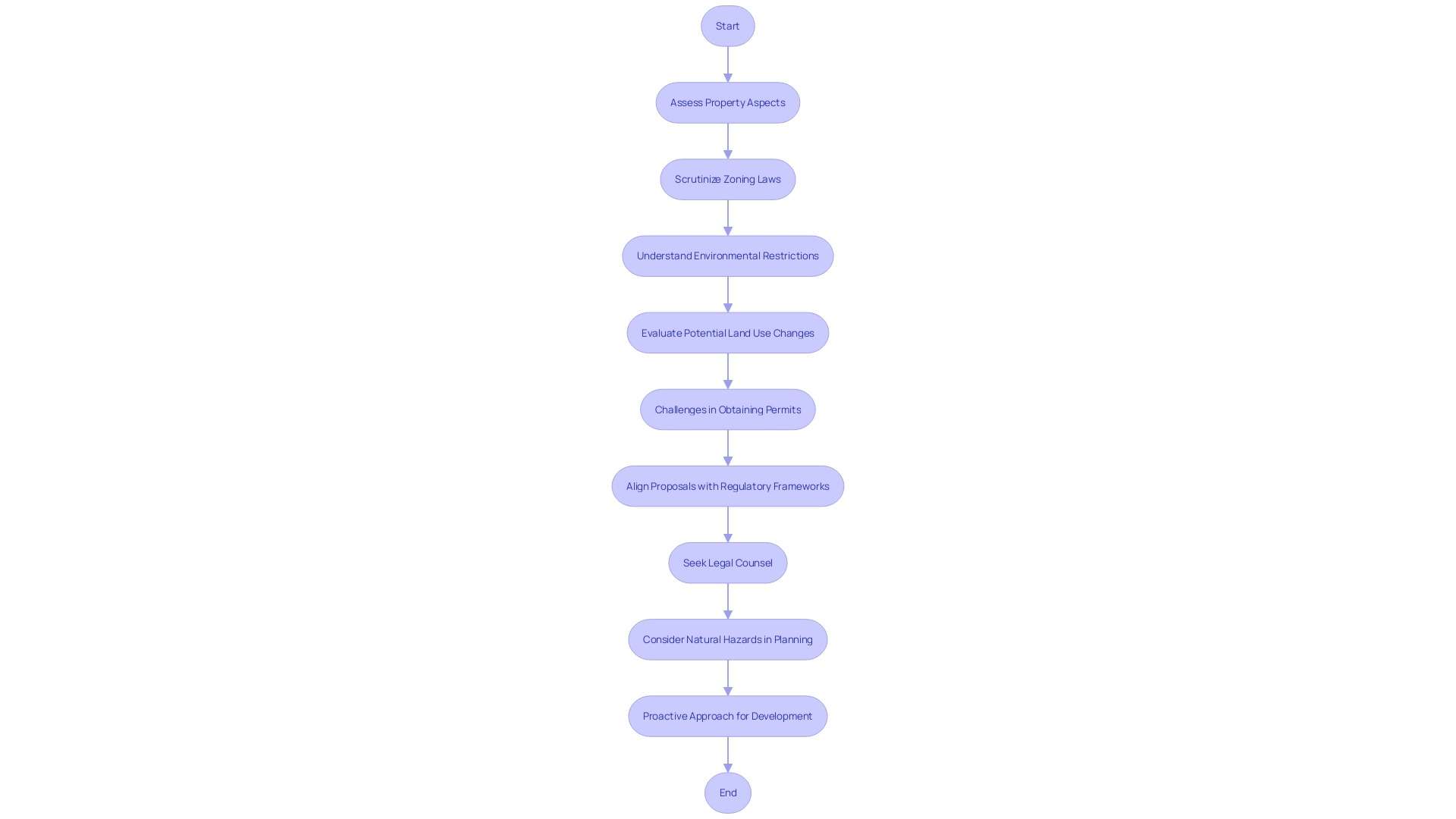
Changing or Removing Deed Restrictions
Navigating deed restrictions can be a critical aspect for landowners seeking to maximize the potential of their property. Deed restrictions, often established through zoning laws or historical regulations, may dictate how a property can be used or developed. For instance, in Houston, a reform reducing minimum-lot-size requirements illustrated the profound impact zoning changes can have on development potential and housing affordability. Smaller lot sizes allowed for increased density, which in turn provided more housing options and mitigated issues like urban sprawl and segregation.
In some historical cases, such as the Bruce's Beach incident in California, property rights and restrictions have been at the forefront of racial justice and legal battles. Contemporary examples, like the zoning reforms in Minneapolis, highlight the significance of inclusive dialogue and the involvement of community voices traditionally excluded from land use discussions, leading to more equitable and sustainable urban planning.
Real estate laws, including the 2024 Real Estate Law, acknowledge the complex, three-dimensional nature of property rights, emphasizing that they are a collective agreement rather than absolute entitlements. Property rights encompass a bundle of rights related to the activities within a specific spatial domain, and while they provide certain exclusivities, they are also subject to regulation and law.
Understanding and potentially altering deed restrictions requires a meticulous approach. Landowners contemplating changes should review their title deeds and consult relevant statutes and regulations to comprehend the legal framework governing their property. It is essential to recognize that property rights are intertwined with broader social, economic, and environmental considerations, as evidenced by recent zoning ordinance rewrites aimed at increasing residential density and providing more affordable housing options.
For those seeking to challenge or amend deed restrictions, it is crucial to note the procedural steps involved, which may include public hearings, as seen in Charlottesville's Planning Commission discussions, and the opportunity for public comment. Engaging in this process can be a pathway to aligning property use with the owner's vision while adhering to the evolving landscape of urban development and regulatory compliance.
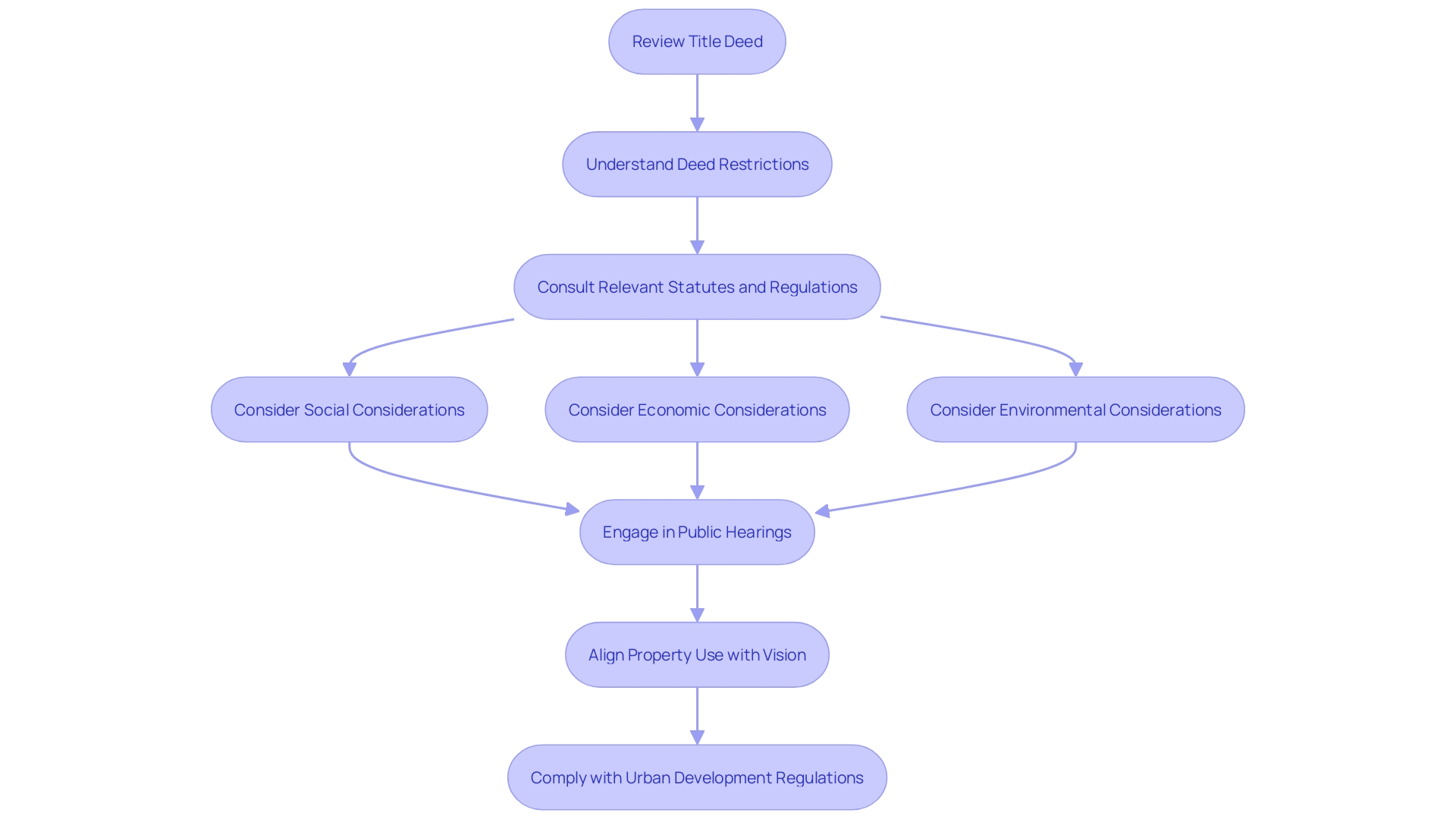
Maintaining Accurate Private Property Maps
Understanding the nuances of land ownership and the importance of precise property boundaries cannot be overstated. With real estate professionals emphasizing the necessity of a property survey to accurately pinpoint property lines, particularly in the context of a sale where buyers require clear delineation of their potential investment, the role of accurate mapping is crucial. A land survey, executed by a qualified surveyor, provides meticulous measurement and detailed mapping of land boundaries and features. This process, vital for establishing property lines, uses advanced tools and techniques to secure precise data about the land's physical attributes and dimensions.
The significance of such surveys extends beyond mere documentation; they are a fundamental component of land development and ownership, helping to avert boundary disputes and clarify the rights and limits of landowners. Moreover, modern Geographic Information Systems (GIS) technology has revolutionized spatial data organization, allowing for the layering and analysis of various geographical elements. Organizations like the National Trust, which oversees a substantial expanse of land, have harnessed GIS for more efficient data sharing and evaluation, enhancing their conservation efforts.
This technological advancement is not limited to conservation efforts. The City of Plano, Texas, for example, has adopted digital tools like Esri's ArcGIS to meticulously catalog its vast water system infrastructure, demonstrating the potential of GIS in urban planning and public utility management. Likewise, initiatives like the interactive environmental health tool developed by McGill University Health Center illustrate the broad applicability of geospatial data in empowering communities and fostering sustainable development.
In conclusion, accurate and up-to-date property mapping, bolstered by professional surveying services and GIS technology, is indispensable for anyone involved in land acquisition, development, and management, ensuring compliance with land restrictions and facilitating informed decision-making.

Conclusion
In conclusion, zoning regulations are crucial for urban development, influencing land use and promoting compatibility among different property types. They have significant implications for housing costs, density, and affordability. Compliance with zoning regulations is essential to avoid legal consequences, financial penalties, and project delays.
Deed restrictions also play a vital role in shaping property use, going beyond public zoning laws. Understanding and navigating these restrictions is crucial for successful land acquisition and development. Easements and rights-of-way have profound effects on property utilization and development plans.
Engaging professional assistance, such as real estate attorneys and land use consultants, is crucial for navigating complex land use regulations. Thorough due diligence, obtaining necessary permits, and seeking legal counsel are essential steps to avoid pitfalls. Staying informed about regulatory developments and participating in the feedback process can influence development outcomes.
For landowners seeking to change or remove deed restrictions, a careful approach is necessary. Maintaining accurate property maps through land surveys and utilizing GIS technology is crucial for establishing boundaries and making informed decisions. Understanding and navigating land zoning, restrictions, and regulations are vital for stakeholders in land acquisition and development.
By complying with regulations, seeking professional assistance, and staying informed, stakeholders can contribute to dynamic, equitable, and sustainable urban environments.




